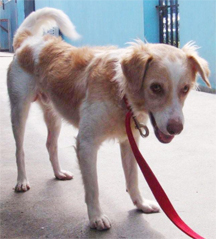Continued
Nutrition and dental health
Last week, we spent some time discussing the cleaning (brushing) of dogs’ teeth. Today, let’s have a look at the nutritional aspect of dental care. It stands to reason that a balanced diet would ensure good health, not lastly where the dog’s teeth are concerned (‘Healthy treats promote healthy teeth’).

The abrasive texture of dry dog food helps to remove plaque (ergo gingivitis – see Pet Corner, September 27).
In addition to the above, experts have carried out several studies and concluded that raw carrots are a healthy tool to help ‘scrape’ excess plaque from teeth. In fact, whole raw carrots are favoured by many dogs that actually enjoy chewing on them, much as they do bones.
Within the context of canine dental health, I should mention that the gnawing on bones or on raw hide strips helps immensely with the prevention and removal of plaque. Now, let us understand that the animal does not and should not be ingesting the raw hide or a large thigh bone. The action of gnawing, in addition to providing exercise for the jaws, also helps massage the tooth surface and the gums.

Also, I must mention that there are several ‘chew toys’ on the market. These might come in the form of hard, synthetic (nylon) ‘bones’ or some such chewable toy.
There is one that has hard rubber grooves and lips that can actually massage below the gum line. I use the word ‘chew’ guardedly, simply because dogs do not chew as we humans do.
They gnaw; they bite and swallow. That is a different action than chewing. For example, dogs could not chew chewing gum. It’s too soft and they would swallow it.
Let’s make a brief summing up; a good dental care programme will include: –
* Daily home dental care (see below)
Regular visits to your veterinarian; this will necessitate an oral examination.
Veterinary dental cleaning, as advised.
* Home oral care includes routine examinations of your dog’s mouth and brushing her teeth.
As you care for your dog’s mouth, look for warning signs of gum disease such as bad breath, red and swollen gums, a yellow-brown crust of tartar around the gumline, and pain or bleeding when you touch the gums or mouth. You should also watch for discoloured, fractured, or missing teeth. Any bumps or masses within the mouth should also be checked by your veterinarian.
Regular brushing of the teeth is a very important preventative for oral (and other) diseases.
As comical as it might sound to Guyanese, believe me that dental care via brushing is worthy of implementation if you are serious about your dog’s health. This is why we used a major part of last week’s (November 29) column to explain how to brush a dog’s teeth.
At home you can introduce special objects (‘toys’) to help with oral hygiene. Mechanical removal of plaque can be achieved by using commercial plaque removing materials, eg rope toys, rawhide bones, etc. Do not use toys that are abrasive and can wear down the teeth. If your dog is an aggressive chewer and likes to bite down, trying to crack the toy, you probably should not let the dog chew on that toy. For especially aggressive chewers look for toys they cannot get their mouths around eg a huge thigh (femur) bone from a cow which you can get from any butcher. Rawhide or other chews that soften as the dog chews are another option.
Please implement disease preventative measures (vaccinations, routine dewormings, monthly anti-heartworm medication, etc) and adopt-a-pet from the GSPCA’s Animal Clinic and Shelter at Robb Street and Orange Walk, if you have the wherewithal to care well for the animals. Do not stray your unwanted pets, take them to the GSPCA’s Clinic and Shelter instead. If you do not wish your pet to have puppies or kittens, you may exploit the GSPCA’s free spay and neutering programme. If you see anyone being cruel to an animal, or if you need any technical information, please get in touch with the Clinic and Shelter by calling 226-4237.





